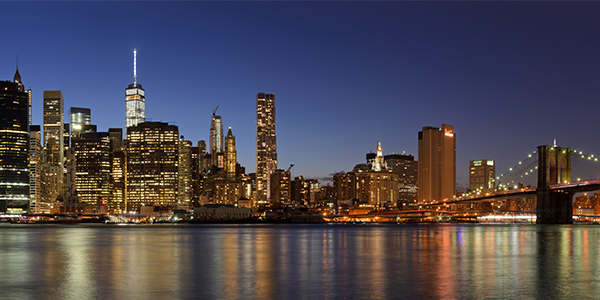The D.C. Circuit Court of Appeals on Tuesday ordered the Environmental Protection Agency to reopen a complaint filed by New York state over air pollution from upwind coal generators in nine other states.
New York petitioned the EPA in 2018 to find that power-generating and other facilities in Illinois, Indiana, Kentucky, Maryland, Michigan, Ohio, Pennsylvania, Virginia and West Virginia were violating the “good neighbor” provision of the Clean Air Act with emissions that made it difficult for the New York metropolitan area to maintain compliance with the National Ambient Air Quality Standards (NAAQS) for ozone.
The EPA denied New York’s petition on the grounds that it failed to meet standards for proving “good neighbor” violations by demonstrating that cost-effective controls could be imposed on the pollution sources.
But in a unanimous decision, the three-judge panel determined that the EPA’s decision was “convoluted and seemingly unworkable” and relied on “faulty interpretations” of the Clean Air Act, which led it to conclude that New York did not have an air quality problem under the 2008 NAAQS.
“The EPA’s test, at best, was a moving target and, at worst, demanded likely unattainable standards of proof,” Judge Patricia A. Millett wrote in her opinion.
In March 2018, New York filed a Section 126(b) petition asking the EPA to find that approximately 350 sources of nitrogen oxides, mostly coal-fired power plants, were contributing significantly to the New York metro area’s — Northern New Jersey, Long Island, New York City and Connecticut — nonattainment under the 2008 and 2015 NAAQS. Although New York state filed the petition, New Jersey and New York City joined in appealing the EPA’s ruling.
The court said, although EPA’s October 2019 ruling assumed that the emissions in the nine states were “linked” to air quality problems in the New York metro area, it denied the petition based on New York’s failure to establish significant contributions from upwind sources under either the 2008 or 2015 NAAQS.
The EPA said New York’s “assessment of whether the sources” could be “further controlled through implementation of cost-effective controls [was] insufficient” and could have met its “evidentiary burden” through several analyses, including describing or quantifying available emissions reductions from the named sources or describing the downwind air quality impacts of controlling the sources located in the nine states.
In its decision, the court said the EPA’s reasons for rejecting the petition were “arbitrary and capricious” because the agency failed to provide a “reasoned explanation” why the petition failed to show that the named sources of pollution contributed to environmental nonattainment in the state and that the New York metro area did not have a “cognizable air quality problem” under the 2008 NAAQS.
The petition will now go before review at the EPA with the judges not imposing a formal deadline for a decision. New York had asked the court to impose a 60-day deadline for a decision.
“Although we decline to impose a formal deadline at this time, we fully expect the EPA to act promptly on remand,” the court said.
Environmental groups hailed the court’s decision.
“Today’s decision will help protect the lives and health of millions of New Yorkers who are threatened by the smog that blows across state lines,” said Liana James, attorney for the Environmental Defense Fund. “The ‘good neighbor’ provisions of the Clean Air Act exist so that downwind states don’t have to struggle with dangerous pollution alone. Today, the court reinforced that fundamental ideal and ordered EPA to do its job.”




